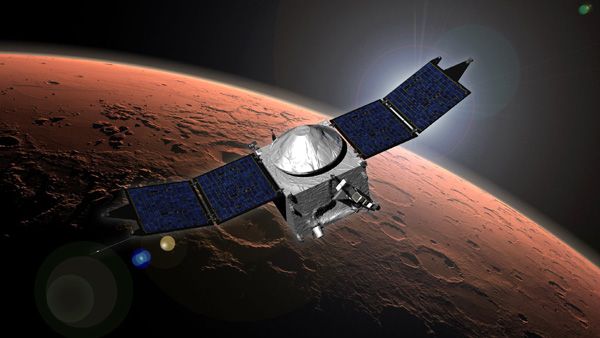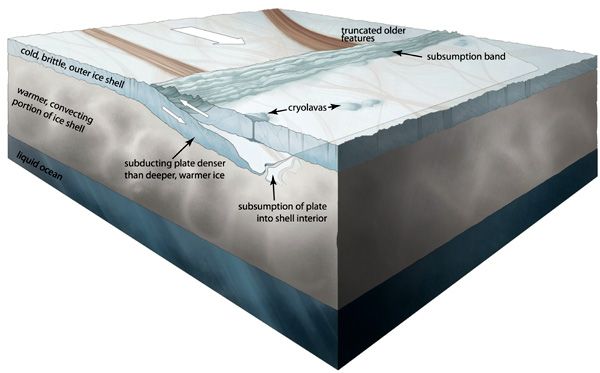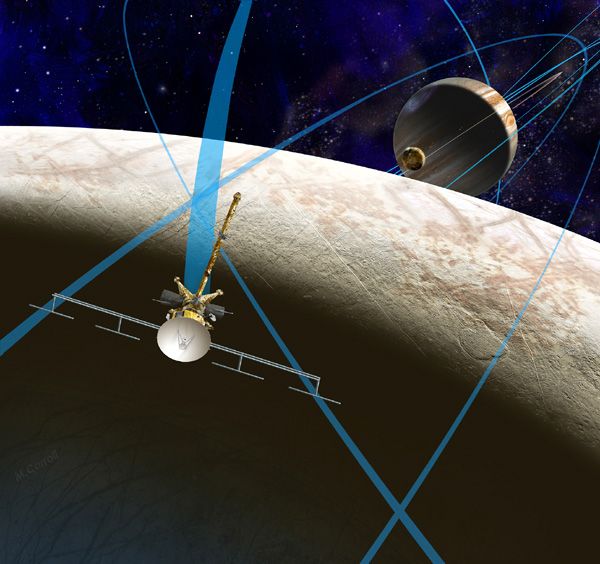 ESA / Rosetta / MPS for OSIRIS Team MPS / UPD / LAM / IAA / SSO / INTA / UPM / DASP / IDA
'J' Marks the Spot for Rosetta's Lander (Press Release)
ESA / Rosetta / MPS for OSIRIS Team MPS / UPD / LAM / IAA / SSO / INTA / UPM / DASP / IDA
'J' Marks the Spot for Rosetta's Lander (Press Release)
The European Space Agency's
Rosetta's lander,
Philae, will target Site J, an intriguing region on comet 67P/Churyumov-Gerasimenko that offers unique scientific potential, with hints of activity nearby, and minimum risk to the lander compared to the other candidate sites. The 220-pound
(100-kilogram) lander is scheduled to reach the surface on November 11, where it will perform in-depth measurements to characterize the nucleus. Rosetta is an international mission spearheaded by the European Space Agency with support and instruments provided by NASA.
Site J is on the "head" of the comet, an irregular shaped world that is just over 2.5 miles
(four kilometers) across at its widest point. The decision to select Site J as the primary site was unanimous. The backup, Site C, is located on the "body" of the comet.
"As we have seen from recent close-up images, the comet is a beautiful but dramatic world - it is scientifically exciting, but its shape makes it operationally challenging," says Stephan Ulamec, Philae Lander Manager at the German Aerospace Center
(DLR) in Cologne. "None of the candidate landing sites met all of the operational criteria at the 100-percent level, but Site J is clearly the best solution."
Over the weekend, the Landing Site Selection Group of engineers and scientists from Philae's Science, Operations and Navigation Center at the National Center of Space Studies of France
(CNES), the Lander Control Center at DLR, and scientists representing the Philae Lander instruments and ESA's Rosetta team, met at CNES, Toulouse, France, to consider the available data and to choose the primary and backup sites.
A number of critical aspects had to be considered, not least that it had to be possible to identify a safe trajectory for deploying Philae to the surface and that the density of visible hazards in the landing zone should be minimized. Once on the surface, other factors come into play, including the balance of daylight and night-time hours, and the frequency of communications passes with the orbiter.
The descent to the comet is passive and it is only possible to predict that the landing point will be within a "landing ellipse"
(typically a few hundred meters) in size. For each of Rosetta's candidate sites, a larger area -- four-tenths of a square mile
(one square kilometer) -- was assessed. At Site J the majority of slopes are less than 30-degrees relative to the local vertical, reducing the chances of Philae toppling over during touchdown. Site J also appears to have relatively few boulders, and it receives sufficient daily illumination to recharge Philae and continue science operations on the surface beyond the initial battery-powered phase.
Provisional assessment of the trajectory to Site J found that the descent time of Philae to the surface would be about seven hours, a length that does not compromise the on-comet observations by using up too much of the battery during the descent.
Both Sites B and C were considered as the backup, but C was preferred because of a higher illumination profile and fewer boulders. Sites A and I had seemed attractive during first rounds of discussion, but were dismissed at the second round because they did not satisfy a number of the key criteria.
A detailed operational timeline will now be prepared to determine the precise approach trajectory of Rosetta in order to deliver Philae to Site J. The landing must take place before mid-November, as the comet is predicted to grow more active as it moves closer to the sun.
"There's no time to lose, but now that we're closer to the comet, continued science and mapping operations will help us improve the analysis of the primary and backup landing sites," says ESA Rosetta flight director Andrea Accomazzo from the European Space Operations Centre in Darmstadt, Germany. "Of course, we cannot predict the activity of the comet between now and landing, and on landing day itself. A sudden increase in activity could affect the position of Rosetta in its orbit at the moment of deployment and in turn the exact location where Philae will land, and that's what makes this a risky operation."
All commands for Philae's descent will be uploaded prior to the lander's separation from the Rosetta orbiter. Once deployed from Rosetta, Philae's descent will be autonomous, with the lander taking images and other observations of the comet's environment.
Philae will touch down at the equivalent of walking pace and then use harpoons and ice screws to fix itself onto the comet's surface. It will then make a 360-degree panoramic image of the landing site to help determine where and in what orientation it has landed. The initial science phase will then begin, with other instruments analyzing the plasma and magnetic environment, and the surface and subsurface temperature. The lander will also drill and collect samples from beneath the surface, delivering them to the on-board laboratory for analysis. The interior structure of the comet will also be explored by sending radio waves through the surface toward Rosetta.
"No one has ever attempted to land on a comet before, so it is a real challenge," says Fred Jansen, the ESA Rosetta mission manager from the European Space Research Technology Center, Noordwijk, the Netherlands. "The complicated 'double' structure of the comet has had a considerable impact on the overall risks related to landing, but they are risks worth taking to have the chance of making the first ever soft landing on a comet."
The landing date should be confirmed on September 26 after further trajectory analysis and the final Go/No Go for a landing at the primary site will follow a comprehensive readiness review on October 14.
Launched in March 2004, Rosetta was reactivated in January 2014 after a record 957 days in hibernation. Composed of an orbiter and lander, Rosetta's objectives since arriving at comet 67P/Churyumov-Gerasimenko earlier this month are to study the celestial object up close in unprecedented detail, prepare for landing a probe on the comet's nucleus in November, and track its changes through 2015, as it sweeps past the sun.
Comets are time capsules containing primitive material left over from the epoch when the sun and its planets formed. Rosetta's lander will obtain the first images taken from a comet's surface and will provide comprehensive analysis of the comet's possible primordial composition by drilling into the surface. Rosetta also will be the first spacecraft to witness at close proximity how a comet changes as it is subjected to the increasing intensity of the sun's radiation. Observations will help scientists learn more about the origin and evolution of our solar system and the role comets may have played in seeding Earth with water, and perhaps even life.
Rosetta is an ESA mission with contributions from its member states and NASA. Rosetta's Philae lander is provided by a consortium led by the German Aerospace Center, Cologne; Max Planck Institute for Solar System Research, Gottingen; National Center of Space Studies of France
(CNES), Paris; and the Italian Space Agency, Rome. NASA's Jet Propulsion Laboratory in Pasadena, California, a division of the California Institute of Technology, manages the U.S. participation in the Rosetta mission for NASA's Science Mission Directorate in Washington.
Source: Jet Propulsion Laboratory
****
 ESA / Rosetta / MPS for OSIRIS Team MPS / UPD / LAM / IAA / SSO / INTA / UPM / DASP / IDA
ESA / Rosetta / MPS for OSIRIS Team MPS / UPD / LAM / IAA / SSO / INTA / UPM / DASP / IDA



































